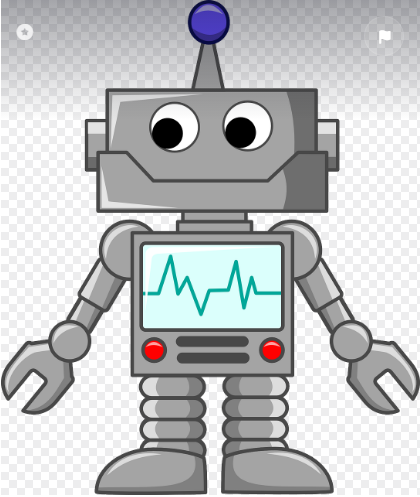Robot toys have evolved significantly over the years, transforming from simple mechanical gadgets into sophisticated, interactive companions that blend education, entertainment, and technology. This article explores the history, types, benefits, and potential future of robot toys, highlighting how they are shaping the play experiences of children and the landscape of educational tools.
A Brief History of Robot Toys
The concept of robotic toys dates back to the early 20th century. In 1920, the term “robot” was first introduced in Karel Čapek’s play “R.U.R. (Rossum’s Universal Robots),” depicting artificial beings that could perform human tasks. However, it wasn’t until the 1950s and 1960s that the first mechanical toys resembling robots began to emerge. These toys, often powered by simple wind-up mechanisms or basic electric circuits, captured the imagination of children and paved the way for more advanced designs.
One of the earliest successful robot toy was Robby the Robot, featured in the 1956 science fiction film Forbidden Planet. Following this, the toy industry began to experiment with various designs, leading to the introduction of walking robots and remote-controlled toys in the 1970s and 1980s. Brands like Tomy and Hasbro produced simple robot toys that could move and make sounds, captivating children’s attention.
The 1990s saw a significant technological shift with the advent of microprocessors and programmable toys. This innovation led to the development of programmable robots like the LEGO Mindstorms, which allowed children to build and program their robots. These toys not only entertained but also introduced kids to the basics of robotics and programming.
Types of Robot Toys
Today, the market is flooded with various types of robot toys, each catering to different age groups and interests. Some of the most popular categories include:
1. Educational Robot Toys
Educational robot toys focus on teaching children STEM (science, technology, engineering, and mathematics) concepts through play. They often come with programmable features that allow children to learn coding and robotics. Examples include:
- Botley the Coding Robot: Designed for preschoolers, Botley teaches basic programming concepts without the need for screens, making it ideal for young learners.
- Sphero: A spherical robot that can be controlled via a smartphone app. Children can learn coding by programming Sphero to navigate obstacle courses or perform tricks.
2. Remote-Controlled Robots
Remote-controlled robot toys have been popular for decades. These toys can be operated using handheld controllers and come in various designs, including cars, drones, and humanoid robots. Notable examples include:
- Anki Cozmo: A small robot with a personality, Cozmo interacts with users, plays games, and even recognizes faces. Its intuitive controls and interactive features make it a favorite among children.
- ROBBIE the Robot: A remote-controlled humanoid robot that can walk, dance, and respond to commands. Its realistic movements and sounds make it an engaging companion for kids.
3. Interactive and Companion Robots
These robots are designed to interact with children and provide companionship. They often incorporate artificial intelligence and sensors, allowing them to respond to their environment. Examples include:
- Jibo: A social robot that can engage in conversations, recognize faces, and even dance. Jibo’s friendly demeanor makes it a unique addition to the home.
- Aibo: Sony’s robotic dog, Aibo, utilizes artificial intelligence to learn and adapt to its owner’s behavior. This high-tech pet offers companionship and interactive play, blending robotics with emotional engagement.
4. Building and Construction Robots
These robot toys encourage creativity and problem-solving skills by allowing children to build and customize their robots. Examples include:
- LEGO Mindstorms: A versatile building kit that lets children design and program their robots. The combination of construction and coding provides a hands-on learning experience.
- VEX Robotics Kits: These kits offer a range of building components and programming options, enabling kids to create robots for various challenges and competitions.
Benefits of Robot Toys
Robot toys offer numerous benefits that extend beyond mere entertainment. Here are some key advantages:
1. Educational Value
One of the most significant benefits of robot toy is their educational potential. They help children learn essential skills such as:
- Programming and Coding: Many robot toys introduce coding concepts, allowing children to write simple programs and see their code come to life.
- Problem-Solving: Building and programming robots often require critical thinking and problem-solving skills, helping children develop a logical mindset.
- STEM Concepts: Robot toys can teach foundational principles of engineering, mathematics, and science, preparing children for future careers in these fields.
2. Encouragement of Creativity
Robot toys foster creativity by allowing children to design and build their own robots. This hands-on approach encourages imaginative play, as kids can customize their robots and create unique functionalities. Such creative expression is essential for cognitive development and can lead to innovative thinking later in life.
3. Social Interaction
Many robot toys promote social interaction among children. Collaborative play with robots encourages teamwork, communication, and sharing. Children can work together to solve problems or compete in challenges, enhancing their social skills and building friendships.
4. Emotional Engagement
Interactive robots, particularly companion robots, can provide emotional support and companionship. These toys can help children express their feelings and develop empathy as they engage with their robotic friends. Research has shown that children often form bonds with interactive robots, which can positively impact their emotional development.
5. Cognitive Development
Playing with robot toys stimulates cognitive development in various ways. Children learn to understand cause-and-effect relationships when programming robots, and they develop spatial awareness and fine motor skills through building and manipulating robot components.
The Future of Robot Toys
As technology continues to advance, the future of robot toys looks promising. Here are some trends that may shape the landscape of robotic play:
1. Enhanced Artificial Intelligence
The integration of more sophisticated artificial intelligence in robot toy will likely lead to even more engaging and interactive experiences. Future robots may be able to understand and respond to complex commands, engage in natural conversations, and adapt their behaviors based on individual interactions with children.
2. Augmented Reality and Virtual Reality Integration
The incorporation of augmented reality (AR) and virtual reality (VR) into robot toys could revolutionize play experiences. Imagine a robot that not only moves and interacts physically but also enhances the experience with AR overlays or VR environments, making playtime even more immersive and educational.
3. Customization and Personalization
As technology becomes more accessible, we may see a rise in customizable robot toys. Companies could offer kits that allow children to personalize their robots with different parts, functionalities, and even personalities, fostering a deeper connection and engagement.
4. Focus on Sustainability
With growing concerns about environmental issues, future robot toys may incorporate sustainable materials and energy-efficient designs. Companies may prioritize eco-friendly practices, appealing to environmentally conscious consumers and teaching children about sustainability through their toys.
5. Collaborative Learning Environments
As educational institutions recognize the value of robotics in teaching, we may see an increase in collaborative learning environments where children work together with robot toy on projects. Schools may integrate robot toys into their curricula, promoting STEM education and hands-on learning experiences.
Conclusion
Robot toy have come a long way from their mechanical origins, evolving into dynamic, interactive companions that provide entertainment, education, and emotional engagement. Their benefits extend far beyond play, helping children develop essential skills in programming, problem-solving, and creativity.
As technology advances, the future of robot toys looks bright, with innovations in artificial intelligence, customization, and sustainability on the horizon. By continuing to embrace these trends, we can ensure that robot toys remain valuable tools for learning and play, shaping the next generation of innovators and thinkers.
Whether in the classroom or at home, robot toys will undoubtedly play a significant role in enriching children’s lives, sparking their curiosity, and preparing them for a future where technology and creativity intersect. As parents and educators, investing in quality robot toys can lead to profound developmental benefits, fostering a love for learning that lasts a lifetime.








